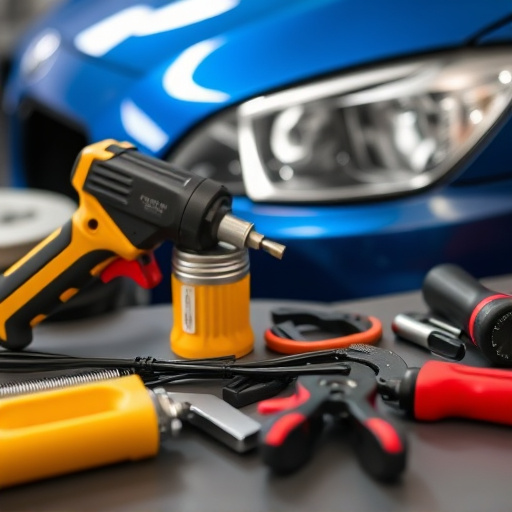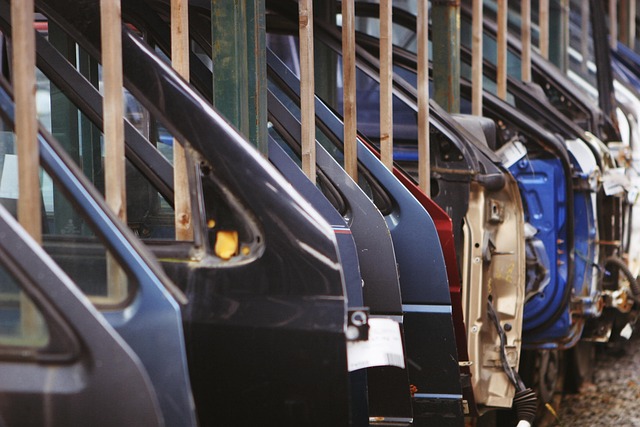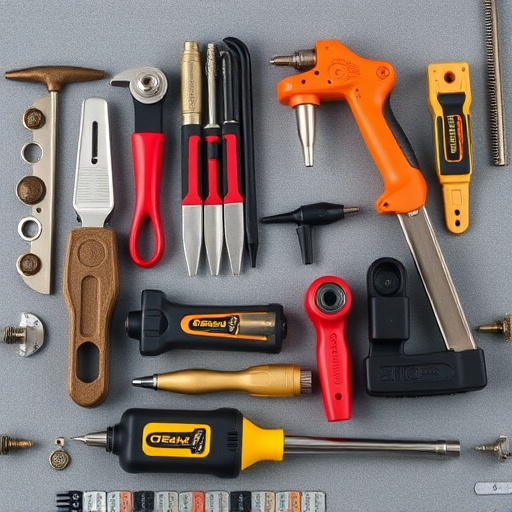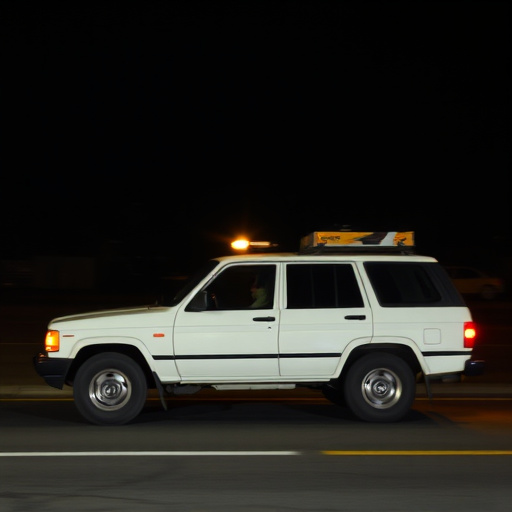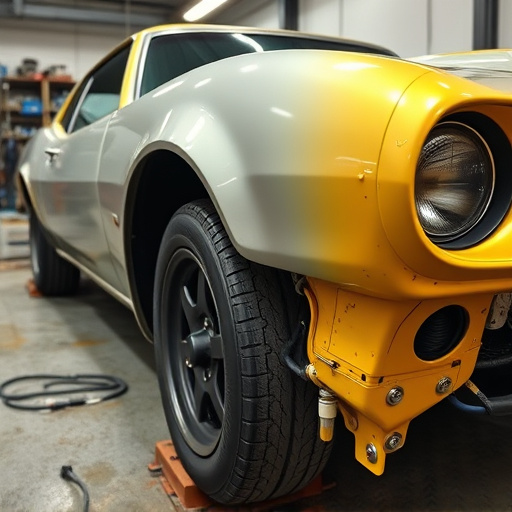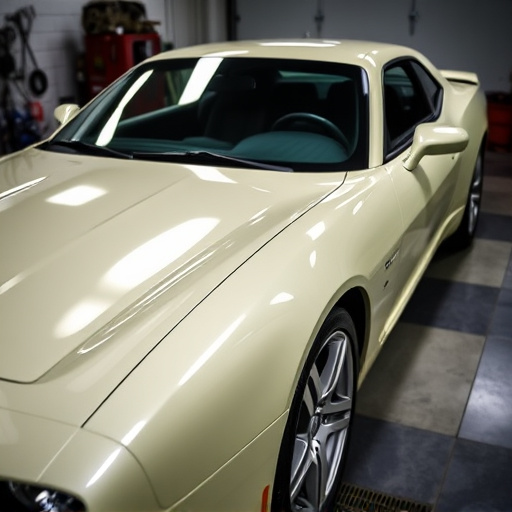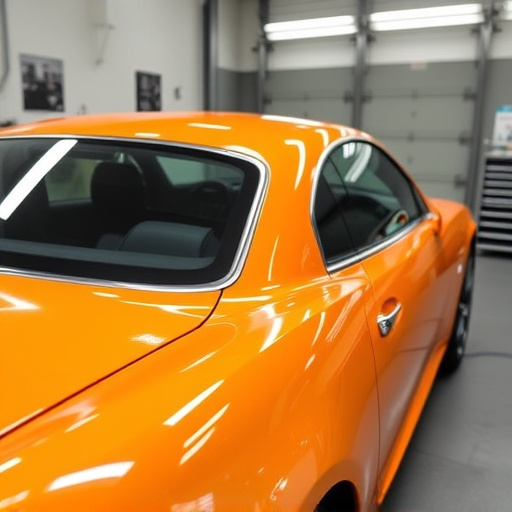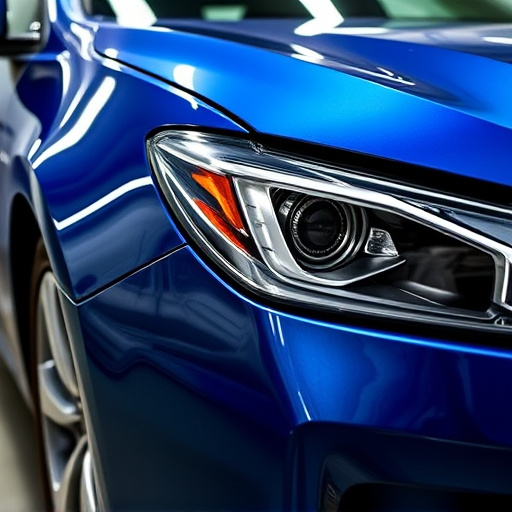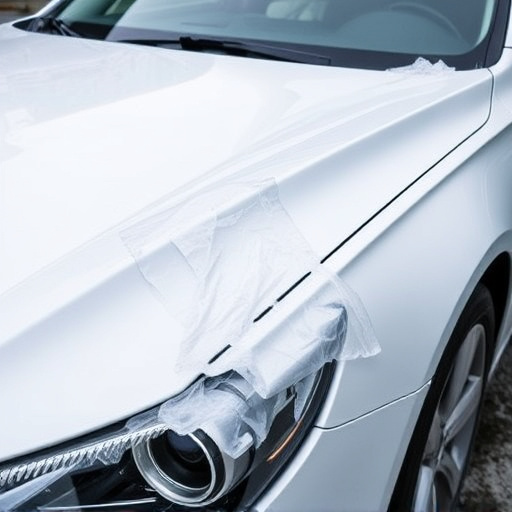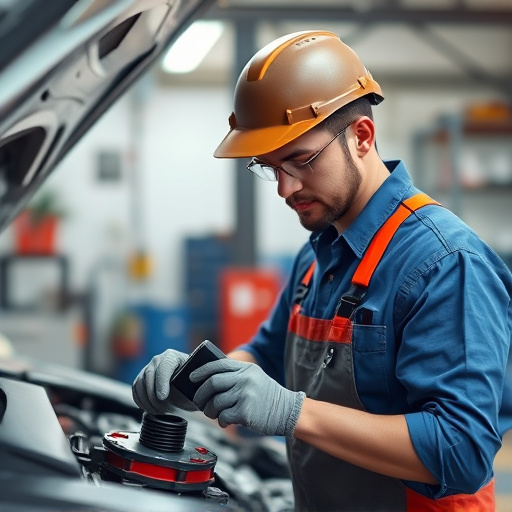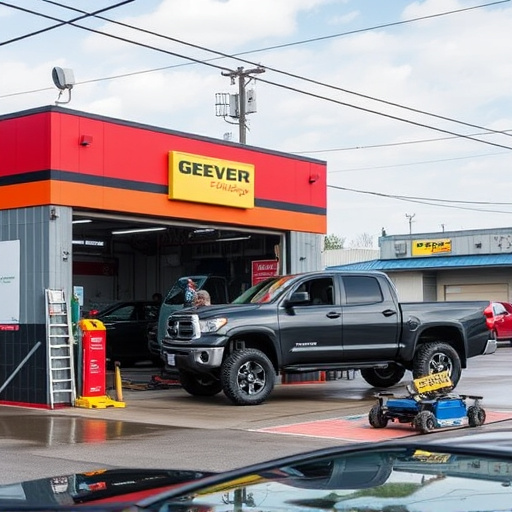After a collision, thorough damage assessment and meticulous blending techniques are vital for seamless panel integration. Skilled technicians clean, prepare, align, and use adhesives to restore panels, ensuring structural integrity while hiding collision traces, resulting in a flawless finish that enhances the vehicle's appearance and value.
After a collision, achieving seamless panel blending is crucial for a car’s aesthetic and structural integrity. This process involves several precise steps. First, assess the damage and identify areas requiring blending. Then, prepare surfaces by removing debris and ensuring a clean, even base. Next, apply adhesive strategically and achieve perfect alignment for each panel. These meticulous steps ensure a professional repair, restoring your vehicle’s pre-collision appearance with expert blending techniques.
- Assess Damage and Identify Blending Areas
- Prepare Surfaces for Seamless Integration
- Apply Adhesive and Precise Alignment Technique
Assess Damage and Identify Blending Areas
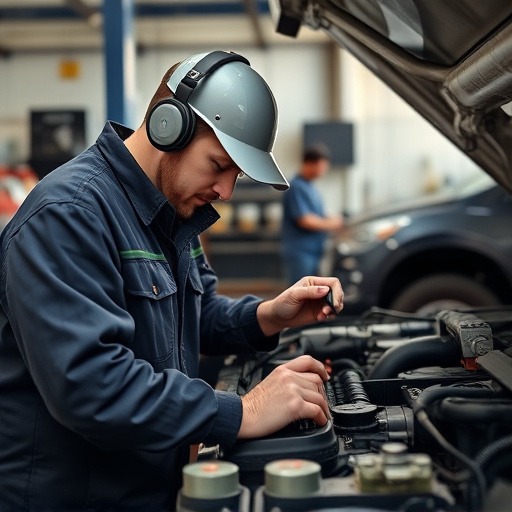
After a collision, the first step in proper panel blending is to thoroughly assess the damage. This involves inspecting every affected panel for dents, cracks, and other defects that need attention. It’s crucial to identify not just visible damage but also hidden issues that could impact the structural integrity of the vehicle. The goal is to ensure each panel blends seamlessly with its neighbors once repairs are made, creating a flawless finish that mimics the original condition of the vehicle.
During this assessment, focus on key areas where panel blending is particularly important, such as the fenders, doors, and hood. These components often sustain significant damage in a fender bender or auto collision center incident. Proper blending techniques, including precise cutting, shaping, and painting, are essential to repairing these areas effectively. By addressing these blending areas diligently, you lay the groundwork for a successful restoration that enhances the vehicle’s overall appearance and value.
Prepare Surfaces for Seamless Integration
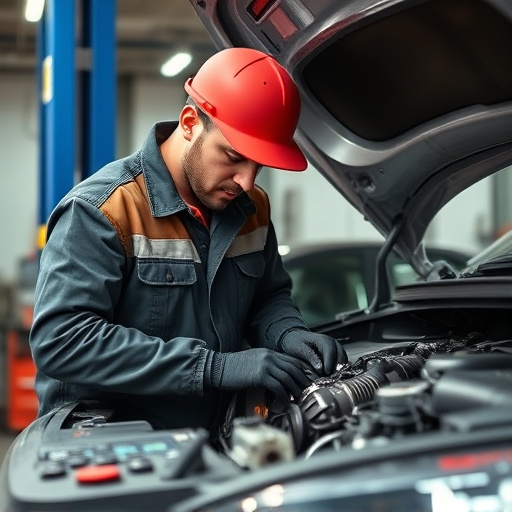
After a collision, ensuring proper panel blending is essential for achieving a seamless and professional vehicle repair outcome. The first step in this process involves preparing the surfaces to be joined. This includes thoroughly cleaning and decontaminating the damaged panels and adjacent areas to eliminate any dirt, grease, or debris that could hinder adhesion. Sanding the edges of the panels to create a rough texture is also crucial, as it allows for better paint grip and bonding.
A meticulous approach to surface preparation is key when blending panels post-collision. This involves careful consideration of techniques like wet sanding and using specialized tools to ensure the surfaces are ready for the next phase. For a successful fender bender repair or even a more extensive vehicle repair, achieving precise alignment and an even base for paintingless dent repair (PDR) techniques is vital.
Apply Adhesive and Precise Alignment Technique
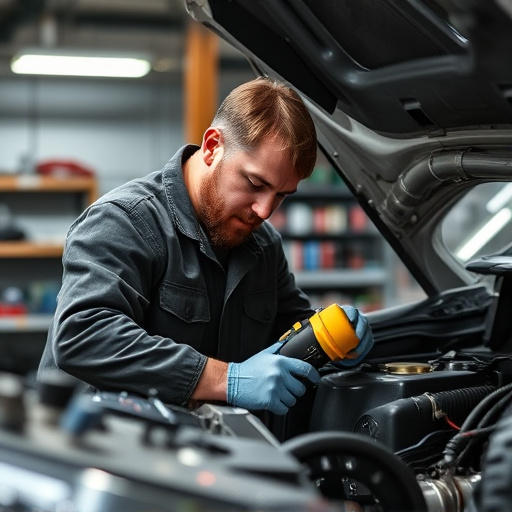
After ensuring the panels are clean and prepared, the next step in proper panel blending after a collision involves applying adhesive and implementing precise alignment techniques. This critical phase demands meticulous care to achieve seamless integration between the repaired and original sections. Skilled technicians use specialized adhesives designed for automotive applications, carefully following manufacturer guidelines for optimal bonding strength.
Proper alignment is paramount to prevent visible gaps or misalignments that could undermine the structural integrity of the vehicle. Advanced tools like precision gauges and alignment equipment help in achieving exacting specifications, ensuring that every panel fits perfectly with its counterpart. This meticulous approach, combined with high-quality adhesives, lays the foundation for a successful blend that masks the collision’s traces, restoring the vehicle to its pre-accident condition at top-tier car body shops offering superior collision repair services.
Proper panel blending after a collision is an art that requires meticulous attention to detail. By carefully assessing damage, preparing surfaces, and applying the right adhesive with precise alignment, you can achieve seamless integration that restores your vehicle’s aesthetic to its pre-collision state. This process not only enhances the car’s appearance but also ensures structural integrity, making it a crucial step in any collision repair job.

